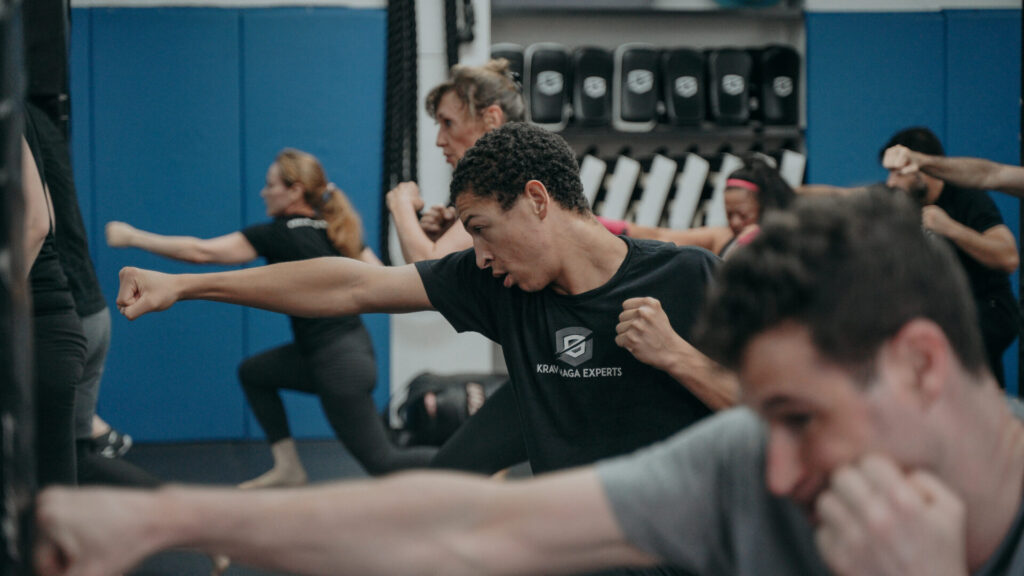Cultivate a Fighter’s Mindset for Real-World Defense
Victory in combat doesn’t come down to a single punch or kick. As Bruce Lee once said, “Forget winning and losing; forget honor and pain. Let your opponent graze your skin, and you break his flesh; let him break your flesh, and you break his bones; let him break your bones, and you take his life.” A quote like this speaks to the essence of true resilience in self-defense—either you learn to endure, or you might as well hire a bodyguard. Or, as one of my dear friends says
“if you don’t believe in violence, be ready to hide behind someone who does.”
For many, self-defense is a trend of interest, often with a misconception that reality looks vastly different from the controlled environment of a ring. Sure, it’s easy to say that the real world is not a boxing match and that sparring won’t fully prepare you for a street encounter. But there’s a crucial lesson here. The skills you hone in sparring, the resilience, and the mental fortitude are what bridge the gap between training and survival. Let’s break down why sparring—despite its rules and limits—is essential for building a real, effective self-defense mindset.
Like I always say – if you want to learn to swim, you can’t avoid water.
If you want to face reality, you have to step into it, imperfections and all. Training can’t be just about mastering perfect forms or executing moves in a sanitized, predictable environment. It’s about learning to adapt, to thrive even when things go off script. And just like water in swimming, discomfort in sparring is essential. You learn to deal with fear, adrenaline, and pain in a way that controlled environments can’t replicate. So, let’s dive into why sparring—not as a fight but as a preparation—can make all the difference when real-life calls.
Reality vs. Competitive Fighting
Real-life combat doesn’t have referees, weight classes, or time limits, and the setting could be unpredictable and full of surprises. In the street, you won’t find the controlled environment of a ring. The initial conditions are different; there’s no clear countdown, no protective mats or gear, and certainly no one to ensure you don’t die at the end of the fight.
But sparring isn’t just about fighting; it’s about training your mind and body to handle fear, discomfort, and adrenaline. Sparring builds your response speed, heightens aggression, and refines your courage. The purpose isn’t to imitate the street; rather, it’s to simulate combat in a controlled setting so that, when faced with real danger, you don’t freeze or overthink.
Simplicity Wins Under Pressure
In moments of fear and tension, our bodies go into what’s commonly called “tunnel vision.” Adrenaline kicks in, the heart rate spikes, sounds start to fade, and suddenly, only the most basic and instinctual movements remain accessible. In these high-stress situations, you’re not going to execute a complex sequence of moves that require precision. Fine motor skills drop, and what remains are the simple, gross motor skills that your body can perform instinctively.
This is where the value of simplicity in training becomes clear. When under attack, you don’t have time to dig through an “arsenal” of techniques. You need a core set of simple, effective moves that you can access immediately without hesitation. In survival mode, the elaborate theories fade, leaving only what works. It’s about getting to the point where, in a split second, you can switch from calm to combat and execute your response with speed and efficiency.
Mental Readiness: A Primal Shift
Bruce Lee captured the importance of mental readiness for combat. In our comfortable, civilized lives, most of us don’t know what it’s like to fight for survival. We’re not hunters; we’re shoppers. Most of us wouldn’t know how to butcher an animal, much less take on someone who has stripped away all inhibitions and is prepared to fight with primal intensity.
But those who might threaten you on the street often operate with this predator mindset. They are psychologically and mentally prepared to go to the extreme, willing to do whatever it takes. They’ve shed the layers of societal restraint, ready to attack with no regard for consequences. That’s the mental state we need to acknowledge and train for in self-defense, not so that we become them but so that we can match that intensity if needed.
Developing Aggressive Response and Immediate Reaction
A fighter must learn to respond immediately, and sometimes even when injured. Those who react instantly and assertively increase their chances of survival. Real sparring in the ring exposes you to the sensations of fear, pain, and fatigue, teaching you how to keep fighting through it all. You develop that aggressiveness, the swift response time, and above all, the resilience to keep pushing when things get tough. Sparring trains you to “not feel sorry for yourself,” even when you’re scared, tired, or in pain.
Why Practical Combat Training is Essential
In practical combat disciplines, you’ll find that the toolbox is often limited to only the essential techniques, practiced over and over until they become automatic. Under pressure, fear, and exhaustion, you rely on these limited techniques to see you through. No student in such a setting escapes without facing pain, fear, and perhaps injury, but there’s no other way to build a fighter, mentally and physically.
In this journey, we come to realize that not everything that looks good is effective, and not everything effective looks pretty.
Do something amazing,
Tsahi Shemesh
Founder & CEO
Krav Maga Experts
















